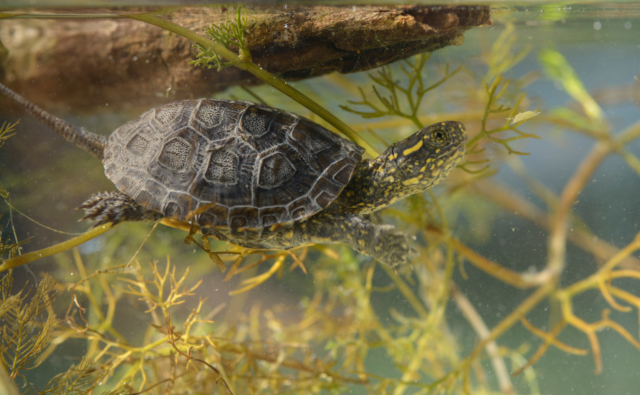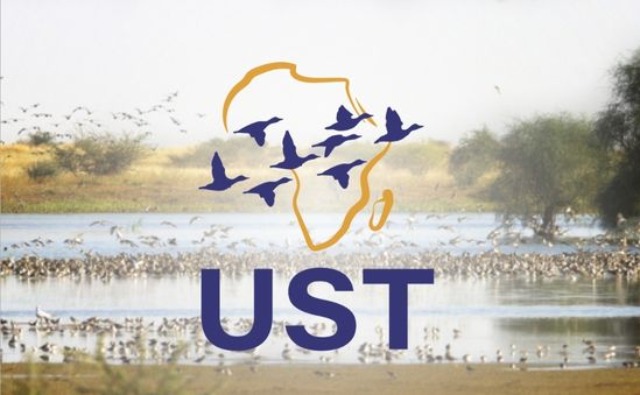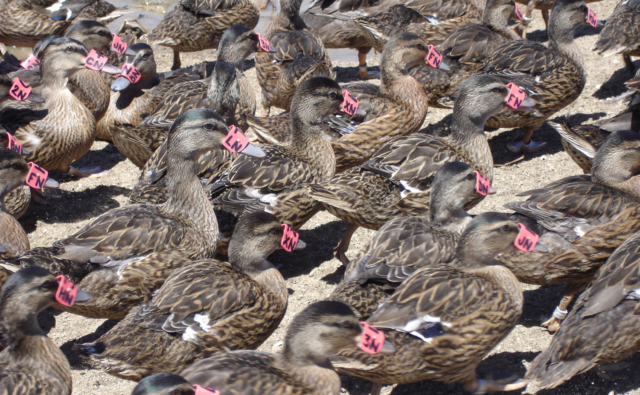Pollutants are now everywhere, even in the most isolated places on our planet. Unfortunately, the Camargue is no exception. The European Pond Turtle (Emys orbicularis), a small native aquatic turtle, has all the characteristics that make it a prime sentinel species for evaluating the contamination of aquatic habitats in the Camargue.
The excellent short animated film made by a group of students at the MoPA graphically illustrates a study being conducted in the Camargue on the impact of pollutants on the European Pond Turtle.
The impact of pollutants on human health and the environment has become a hot topic. Pollutants are now everywhere, even in the most isolated places on the globe, like the north and south poles and ocean trenches.
Even though it is a world-renowned wetland, certified by multiple organisations, and benefitting from very strong protection, the Camargue is unfortunately no exception to this rule. Indeed, pollutants of various origins have accumulated in the Rhone delta. These include agricultural pesticides and anti-parasites, trace metals, PAHs, and dioxin produced by industry, the PCBs and macro-waste carried by the Rhone, as well as atmospheric pollution such as fine particles and ozone. While the level of contamination has now been established, the effects of the pollution on organisms living in natural conditions are often more difficult to ascertain.
This short film was made in an educational partnership with the Tour du Valat by students (Baptiste Duchamps, Maxime Foltzer, Robin Beltran, Swann Valenza et Julien Coetto) at the MoPA Computer Graphics Animation School in Arles.
The European Pond Turtle Team at MoPA made this video to illustrate the study being conducted on the impact of pollutants on the European Pond Turtle (Emys orbicularis). This small native aquatic turtle has all the characteristics that make it a prime sentinel species for evaluating the contamination of aquatic habitats in the Camargue.
The species:
- Has a long lifespan (50 to 80 years),
- Lives and feeds in aquatic habitats,
- Is near the top of the food chain.
The hundreds of blood samples taken over last three years are going to enable us to measure the levels of contamination of various pollutants found in the blood of these turtles including PCBs, organochlorine pesticides, trace metals, and currently used pesticides.
The significant database amassed continuously by the Tour du Valat since 1997 within its Capture-Mark-Recapture study (10,000 sightings of over 1400 marked individuals) combined with observations concerning the health of individuals in terms of oxidative stress, telomeres, and colouring will enable us to evaluate how serious the threat is. Our study of them will certainly reveal many surprises.
Improving our knowledge of the impact of pollutants is one of the main objectives of the second National Action Plan intended to protect this threatened species.
The Tour du Valat is conducting this study in close collaboration with the CEBC-CNRS, EPHE Jussieu, the University of La Rochelle, and the University of Ottawa. The study is funded by the RMC water agency.
By supporting the Tour du Valat, you can contribute to conserving wetlands! Every donation, however small, can make a difference!
Donations help us study nature and continue our efforts to better understand and protect it.
The Tour du Valat works to conserve these areas between land and water which are abundant in biodiversity… and yet one of the most threatened ecosystems on the planet!
You can help us by making a donation to our health ecology research programme by clicking here!
A €100 donation will help fund our programme that monitors European Pond Turtles and water quality.
Contact : Anthony Olivier, Tour du Valat Regional Nature Reserve Ranger – e-mail.



